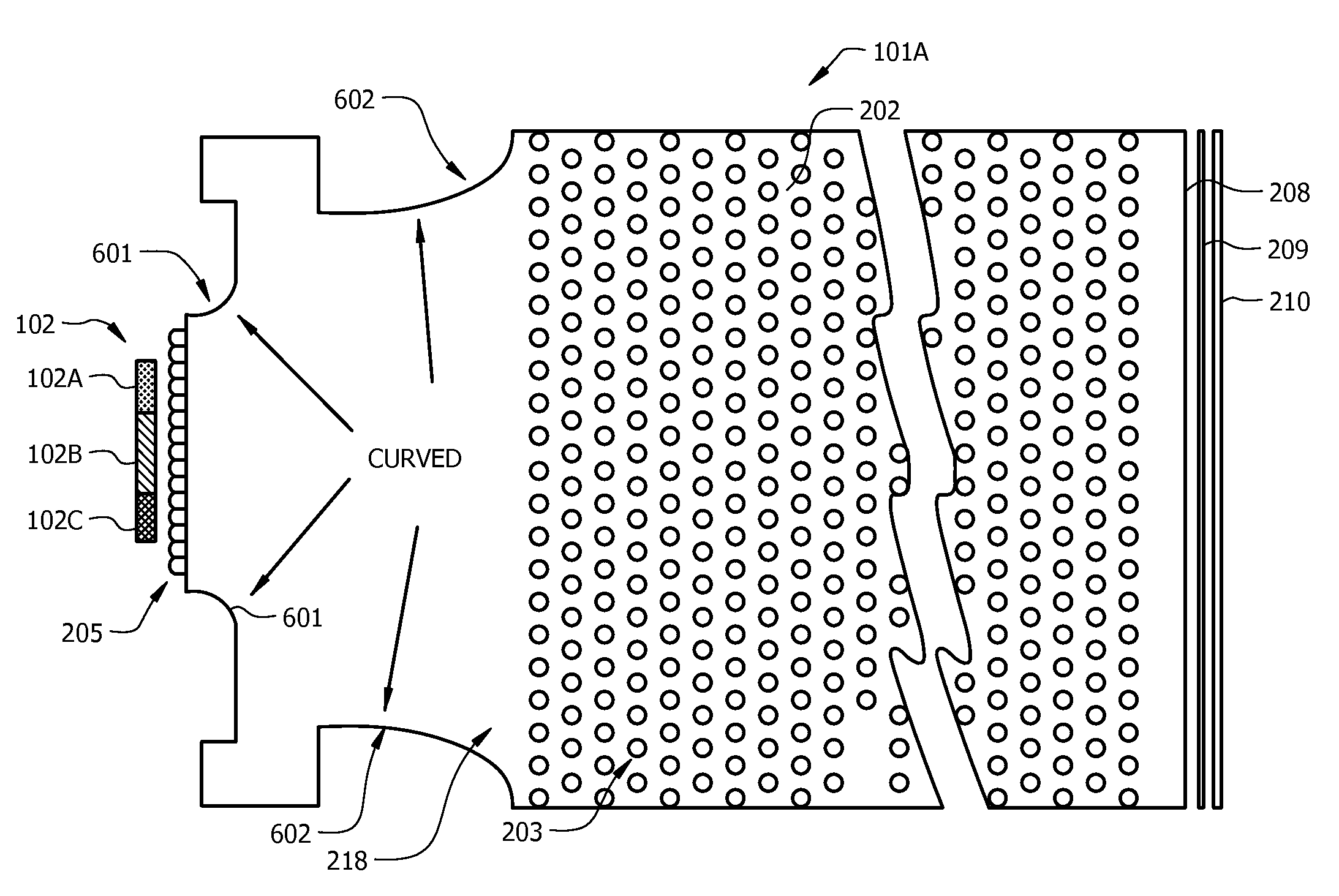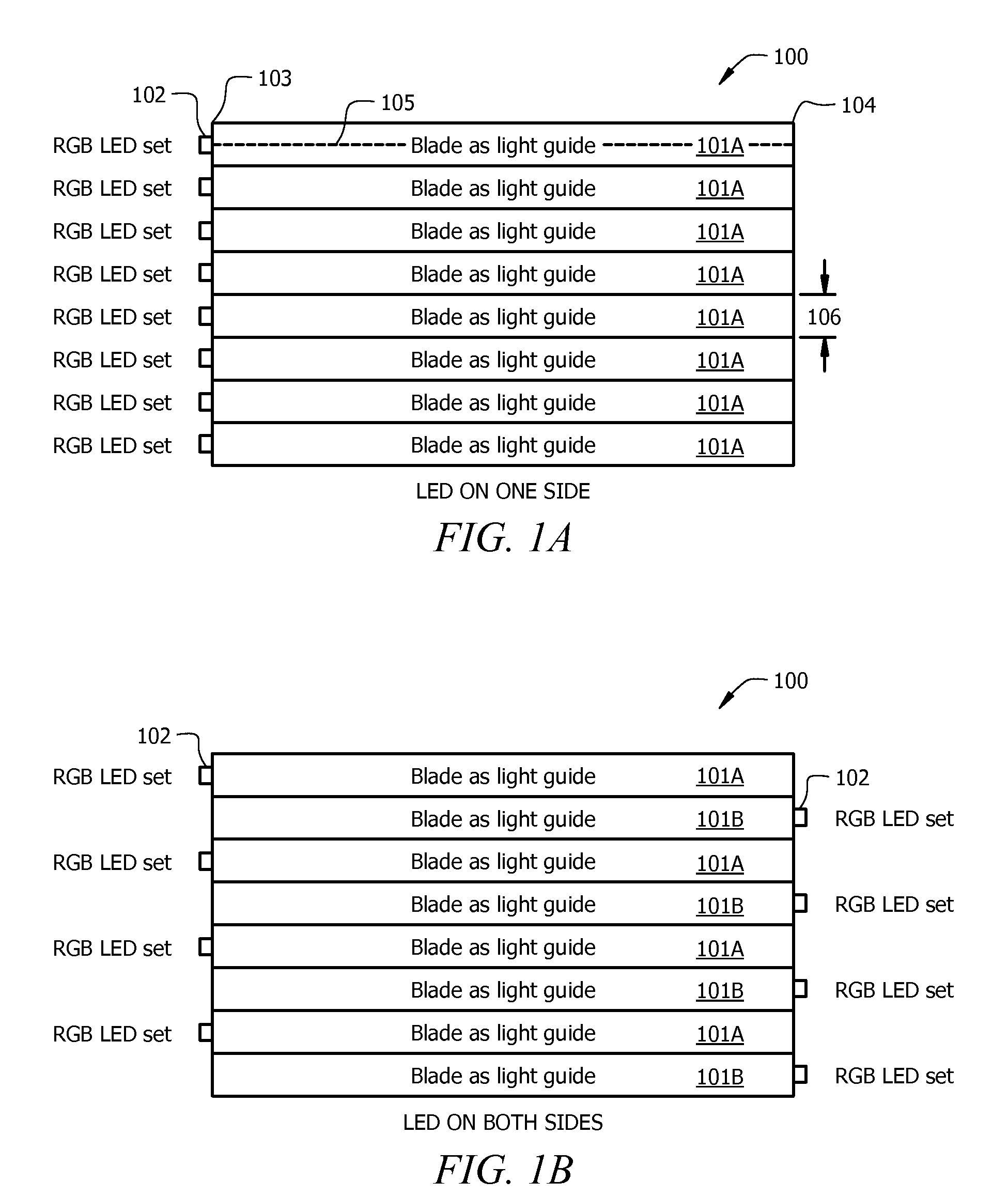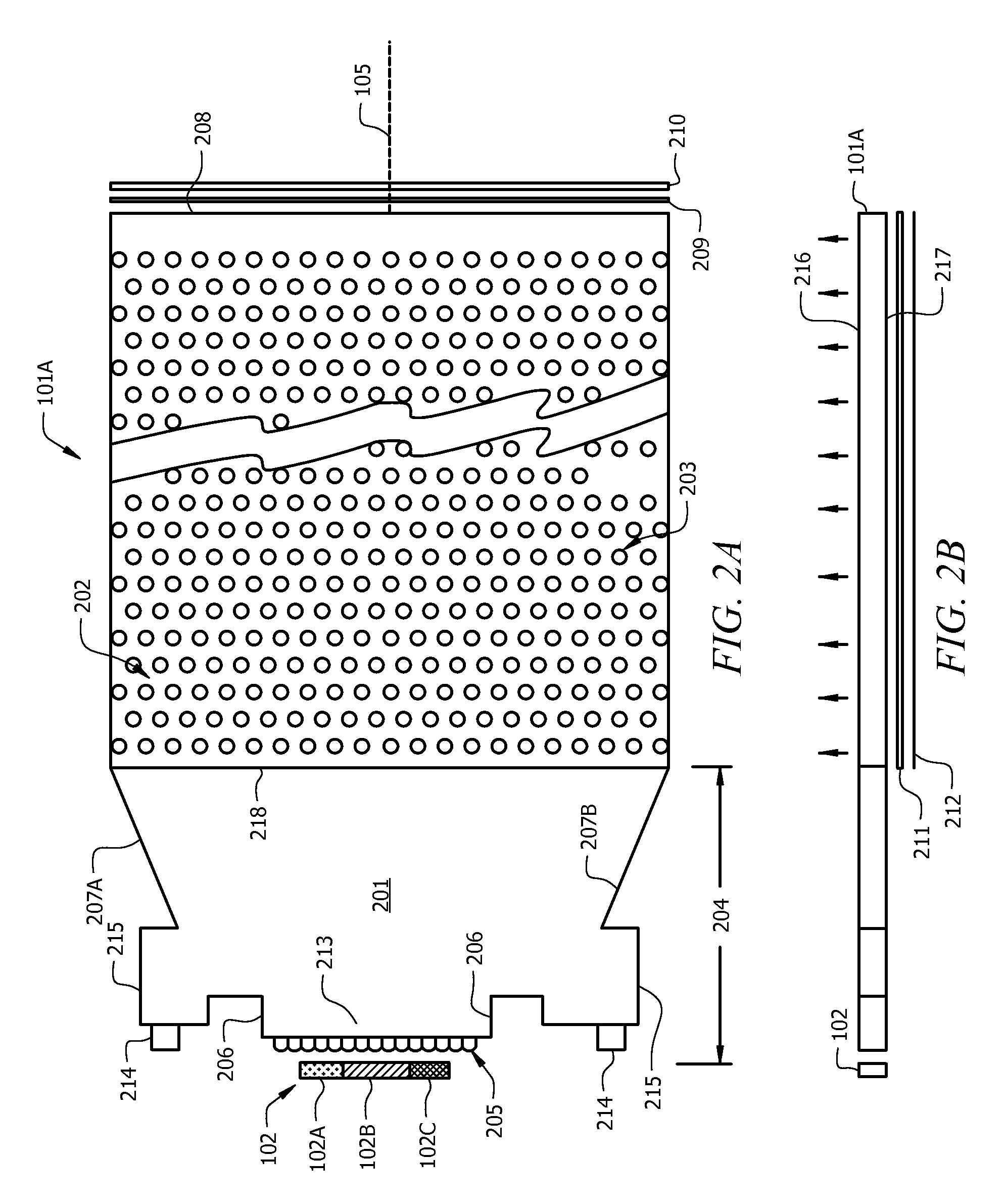Light guide blade with color balancing structures and blue absorption compensation for large screen LED backlight unit
a technology of led backlighting and color balancing structure, which is applied in the direction of planar/plate-like light guides, lighting and heating apparatuses, instruments, etc., can solve the problems that the recent increase of attention and effort of light emitting diodes (leds) and achieves improved light recycling efficiency, high efficiency, and high blue absorption.
- Summary
- Abstract
- Description
- Claims
- Application Information
AI Technical Summary
Benefits of technology
Problems solved by technology
Method used
Image
Examples
first embodiment
[0071]The wavelength-dependent absorption of the bulk plastic material of light guide 101A typically attenuates the shorter (i.e., blue) wavelengths more so than longer (i.e., red) wavelengths. Uncompensated, this tends to produce a reddish tinge to light emitted around the distal end of the micro-lens array 203. The light emitted from distal end 208 of the light guide will also have a reddish tinge. FIG. 8A illustrates a color compensation scheme. FIG. 8A shows a color filter 209 positioned beyond distal end 208, with reflector 210 positioned beyond color filter 209. Color filter 209 is designed to selectively attenuate longer wavelengths (i.e., red color) compared to shorter wavelengths (i.e., blue). The filtered light is reflected by reflector 210, filtered a second time by color filter 209, and reintroduced into distal end 208 of the light guide 101A, counter-propagating toward the proximal end 218 of light guide 101A. The twice-filtered light will have a blue to cyan tinge, cya...
second embodiment
[0072]FIG. 8B illustrates a color compensation scheme. FIG. 8B shows a dichroic mirror 211 positioned beyond distal end 208. Dichroic mirror 211 is designed to selectively reflect shorter wavelengths (i.e., blue) compared to longer wavelengths (i.e., red color). Light not reflected by dichroic mirror 211 passes through dichroic mirror 211 and is damped. The reflected light is reintroduced into distal end 208 of the light guide 101A, counter-propagating toward the proximal end 218 of light guide 101A. The reflected light will have a blue to cyan tinge, cyan being the combination of blue and green light. The reflected, counter-propagating light combines with the reddish-tinged propagating light to produce a compensated light emitted near the distal end of the micro-lens array 203. The compensated light has a more balanced color spectrum so that the color distribution is more uniform across the light guide.
[0073]FIG. 8C qualitatively illustrates the spectrum of light emitted from dista...
PUM
| Property | Measurement | Unit |
|---|---|---|
| thickness | aaaaa | aaaaa |
| wavelength range | aaaaa | aaaaa |
| wavelength range | aaaaa | aaaaa |
Abstract
Description
Claims
Application Information
 Login to View More
Login to View More - R&D
- Intellectual Property
- Life Sciences
- Materials
- Tech Scout
- Unparalleled Data Quality
- Higher Quality Content
- 60% Fewer Hallucinations
Browse by: Latest US Patents, China's latest patents, Technical Efficacy Thesaurus, Application Domain, Technology Topic, Popular Technical Reports.
© 2025 PatSnap. All rights reserved.Legal|Privacy policy|Modern Slavery Act Transparency Statement|Sitemap|About US| Contact US: help@patsnap.com



